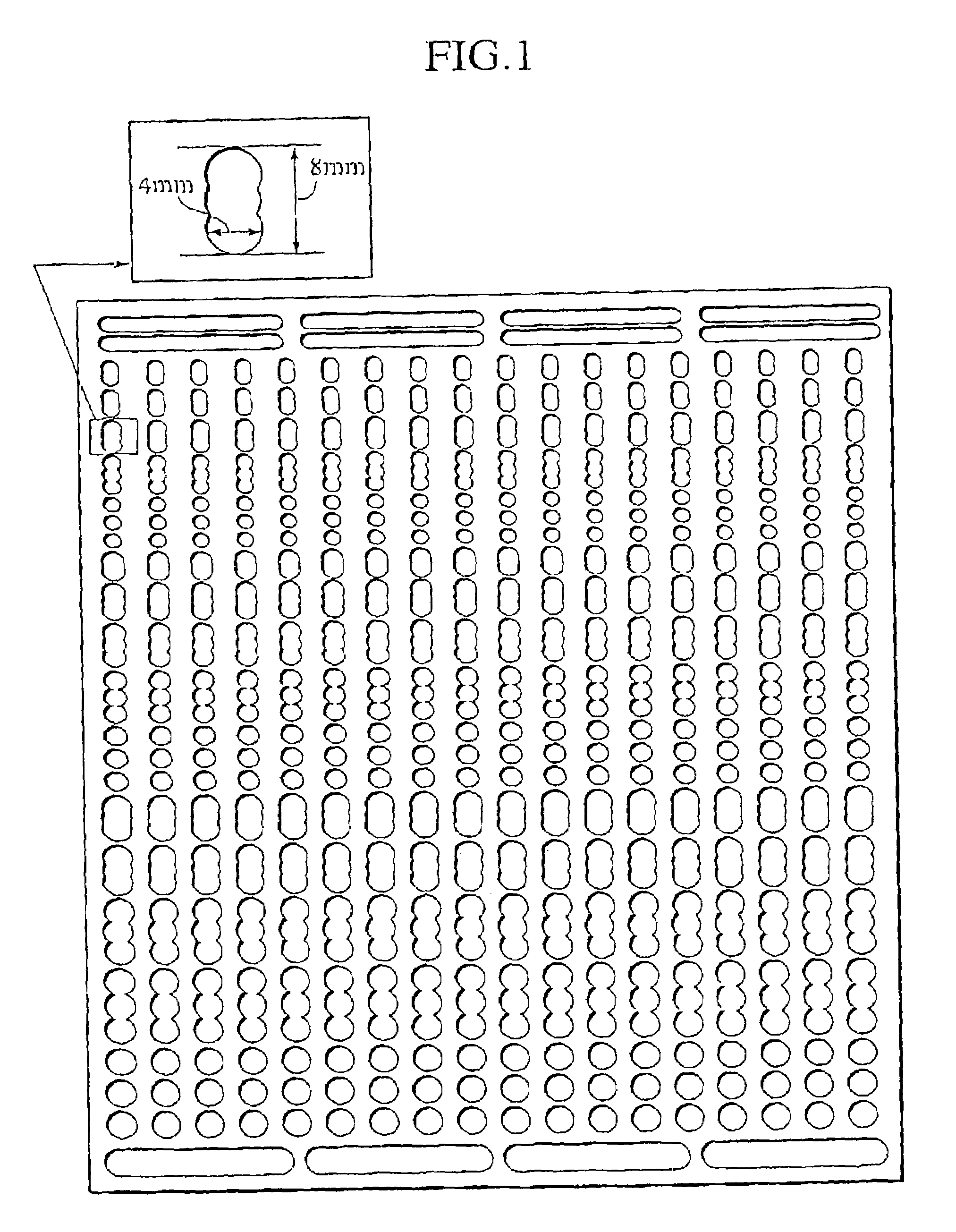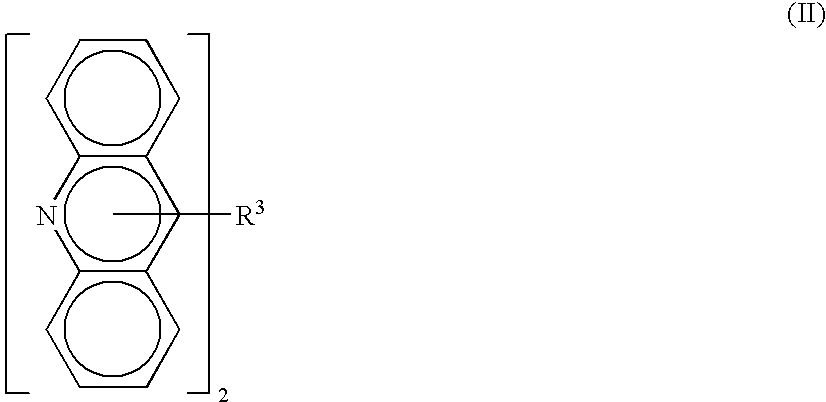Photosensitive resin composition, photosensitive element, production method of resist pattern and production method for printed circuit board
a technology of photosensitive resin and resist pattern, which is applied in the direction of photosensitive materials, circuit masks, instruments, etc., can solve the problems of unbreakable composition against the developer, poor developmentability of isocyanate residues having urethane bonds, and difficult conformation of photosensitive resin compositions to increase resolution, etc., to achieve shorten the development time, high stripping property and tent reliability
- Summary
- Abstract
- Description
- Claims
- Application Information
AI Technical Summary
Benefits of technology
Problems solved by technology
Method used
Image
Examples
experimental examples
[0104]Hereinafter, the present invention will be described with reference to experimental examples.
examples 1 to 8
[0105]Materials shown in Table 1 were mixed together so as to obtain solutions. Then, in the obtained solutions, components (B) shown in Tables 2 and 3 were dissolved so as to obtain solutions of photosensitive resin compositions.
[0106]
TABLE 1Formulation (g)Materials(1)(2)ComponentMethacrylic Acid / Methyl Methacrylate / Ethyl Actrylate / Styrene8989(A)Copolymer (20 / 57 / 21 / 2 (Weight Ratio)), Weight Average(Solid(SolidMolecular Weight = 60,000, 60 wt % Methyl Cellosolve / Toluene =Content:Content:6 / 4 (Weight Ratio) Solution, Dispersion = 2.553)53)Methacrylic Acid / Methyl Methacrylate / Butyl Acrylate / Butyl1919Methacrylate Copolymer (24 / 44 / 15 / 17 (Weight Ratio)), Weight(Solid(SolidAverage Molecular Weight = 30,000, 60 wt % MethylContent:Content:Cellosolve / Toluene = 6 / 4 (Weight Ratio) Solution, Dispersion =11)11)2.0Component1,7-bis(9-acrydinylheptane)0.40(C)N,N′,-tetraethyl-4,4′-diaminobenzophenone0.040.132-(o-chlorophenyl)-4,5-diphenylimidazole Dimer02.5N-phenylglycine00.05AdditivesLeuco Crystal V...
example 9
[0129]A methacrylic acid / methyl methacrylate / ethyl acrylate / styrene copolymer (20 / 57 / 21 / 2(weight ratio)), a weight average molecular weight=60,000, 105 g of 60 wt % methyl cellosolve / toluene=6 / 4 (weight ratio) solution (solid content: 64 g), 36 g of FA-024M, 0.4 g of 1,7-bis(9-acridinylheptane), 0.04 g of N,N′-tetraethyl-4,4′-diaminobenzophenone, 0.9 g of leuco crystal violet, 1.3 g of tribromomethyl phenylsulfone, 0.05 g of malachite green, 12.0 g of acetone, 5.0 g of toluene and 3.0 g of methanol were mixed together so as to obtain a solution.
[0130]Then, the obtained photosensitive resin composition solution was uniformly applied onto a polyethylene terephthalate film (trade name: G2-16, product of Teijin Ltd.) having a thickness of 16 μm, dried in a hot air convention type dryer at 100° C. for 10 minutes, and then protected with a polyethylene protective film (trade name: NF-13, product of TAMAPOLY CO., LTD.) so as to obtain a photosensitive resin composition laminate. The photos...
PUM
 Login to View More
Login to View More Abstract
Description
Claims
Application Information
 Login to View More
Login to View More - R&D
- Intellectual Property
- Life Sciences
- Materials
- Tech Scout
- Unparalleled Data Quality
- Higher Quality Content
- 60% Fewer Hallucinations
Browse by: Latest US Patents, China's latest patents, Technical Efficacy Thesaurus, Application Domain, Technology Topic, Popular Technical Reports.
© 2025 PatSnap. All rights reserved.Legal|Privacy policy|Modern Slavery Act Transparency Statement|Sitemap|About US| Contact US: help@patsnap.com



